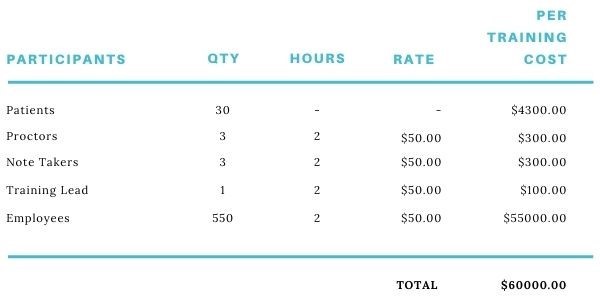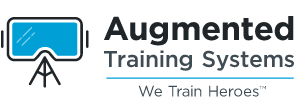AR/VR training can be done at a fraction of the cost of traditional training for emergency response and medical personnel.
Augmented and virtual reality technology will impact the future of work specically in training within an articial environment. The promise of virtual reality development and VR training is that it can be done with a relatively low investment. At Augmented Training Systems, we believe you can do this at a fraction of the cost! Imagine your entire team in virtual reality training at their convenience, anywhere and anytime. When considering the average cost, this provides a very exciting ROI. So let’s take a closer look at cost factors for a business case to invest in VR training
Considerations For Virtual Reality Training Cost:
• Real-world cost breakdown
• Information technology (IT) management system
• Impact on traditional training ROI
• Shift culture to teach employees in virtual environment
• Factors for business case development
• Long-term ROI and savings

UNDERSTAND HOW TO REDUCE COSTS
Virtual reality training promises to be a low cost training option for medical training
Especially for emergency response scenarios, there are common questions around cost comparisons, virtual reality technology, replacing traditional training, gaining budget approval and long-term ROI. Let’s take a look at each of these.
UNDERSTAND HOW TO REDUCE COSTS
SIMPLE MODEL TO DETERMINE “PER TRAINING COST”
Most emergency response directors and managers are very familiar with training costs especially for complex scenarios such as Mass Casualty Incident training. These types of scenarios are ideal to extend and enhance with a VR training program.
See the following table for a simple model similar to what Commander Noble breaks down in the above video.

This is not a perfect example, but it does provide a very simple way for a training commander to plug in their specic numbers and model a “per training cost”. This important concept highlights one of the primary benets of a virtual environment – the ability to repeat trainings individually and/or as groups..
Pricing Breakdown From Austin-Travis County Emergency Response
Speaker: Keith Noble, Commander, Austin-Travis County EMS
Do you think AR/VR training is a more affordable way to train?
Keith Noble: Okay, so our typical training would involve, let’s just say it’s a 30 person MCI.
I would have to get either 30 live people or we have to get 30 dummies or mannequins to do that training. We also need to support staff for that training. So you need some procters, you need some note takers, you need someone to run the training And then you have in our organization about 550 employees that we would need to run through that training.
So That’s 550 people times, probably two hours of overtime time, all the other staff that you have to do it. And that’s a lot of money and that’s a lot of reasons to go towards something that needs to be done.

But the VR And AR Technology, you can do it at a fraction of the cost and you can get better, bigger benet, at least in my mind is you can do it multiple times and anywhere and you can change the scenario. So that’s probably the biggest reason I really like this technology.
Massive Cost Savings Opportunity
When considering that a team of hundreds if not thousands of participants could train multiple times through out the year, the actual vr app development cost of virtual reality training plummets to pennies-on-the-dollar. With an experienced development team, virtual reality app cost will remain low for new training.
“After proving this technology for the City of Austin, ATS is now helping a major US Hospital system train more than a 1,000 doctors and nurses on how to react to a mass casualty incident, a collective training event that formerly cost upwards of 750k and could only be conducted once every 2-3 years.”
– Scott MacLeod, CEO of Augmented Training Systems
Readily Available, Low Cost Equipment That Is Easy To Use
Augmented reality and virtual reality training typically use low-cost equipment such as a VR headset or another type of goggles to provide the immersive or augmented experience. Even smart phones can be used to enable training depending upon the VR training or augmented reality app development approach.
These technologies enable delivery of content at low and often no cost leveraging existing channels such as through a virtual reality app. The required equipment is typically available at local retailers such as Walmart or Best Buy at very low cost

And, the required applications to run the training is readily available. For example, when using the Oculus headset, you simply download their app for free, navigate to the training and jump in. There is a low technical barrier to the training making it very accessible for rst responder and emergency medical training
At Augmented Training Systems, we identied that the game changer for organizations is in having a platform to manage, measure and analyze individual and team performance against your program’s learning objectives. We developed the ATS HERO platform to do this.
Because this solution is a Software-as-a-Service (SaaS) solution, you do not have to invest in IT equipment or personnel to implement, setup and run it resulting in massive cost savings compared to previous simulation technology
“You don’t have to have an IT Department to support VR training.”
– Grayson Lawrence, Co-Founder & UX Lead of Augmented Training Systems
Increasing The ROI of Traditional Training
Virtual Reality Training Is Perfect Compliment To Existing Training
While VR training is likely the future, we still believe in the need for live training both in classroom and simulations. The great news is that these traditional training approaches can be complimented and greatly improved using VR training as a prerequisite to the live training.
Modern learners often lack the motivation to prepare for classroom training with prelearning. This results in the majority of students coming into a classroom cold, apprehensive and without a solid background on what they are about to do.

Often trainers nd it difcult to prepare and plan when many students come in unprepared making the entire training less fruitful than they would like. This can have a negative effect on training and actually increase the average costs of training required to prepare trainees to be mission-ready.
Building virtual reality applications and development costs into your instructional design can increase the efciency and effectiveness of an organization’s overall learning experience and greatly increase the ROI of traditional training
Cost Savings Help Shift Training Culture
Old School Commanders Can Drive “New School” Culture
There is a paradigm shift happening within medical training. The obvious focus areas for virtual reality training is in complex emergency response scenarios requiring cross-organization collaboration and many participants. The complexity and costs make these training moulages challenging, and, as we’ve learned through the pandemic, sometimes impossible to execute. More and more, those that rely primarily on live training are exploring if virtual reality training results in more cost-effective solution for their training needs.

This concept of SaaS and even PaaS (Platform-as-a-Service) open up new ways to think about training for rst responders and emergency response. These modern technology frameworks have a massive impact on costs by leveraging immersive, virtual and augmented experiences into a cloud-based, software subscriptions model that is much more affordable and predictable for long-term budgeting.
That combined with the elimination of need to repair equipment, an extended reality system increasing effectiveness of all training and the potential for entirely new ways to train make virtual reality training a very attractive option to explore.
There is just one answer that many older generation leaders must consider. Not if, but when, will they take the steps to lead their organization towards modernizing their training strategy.
Factors For Business Case Development
Your Requirements Set Virtual Reality Development Cost
There are many factors in the development process for a full program. A business case can be built upon existing standard training to be congured for your organization’s needs. Or, training programs can be customized for the best virtual reality application that will suit your rst responder’s needs.


As the training library grows, quality and return on investment will go up in the virtual reality application. And that will become a usable starting point to develop a business case for EMS and other emergency medical groups looking for virtual and augmented reality training content and VR development.
At Augmented Training Systems, we have a simple process which estimates each training program costs based upon a set of key factors to determine a low, medium or high level of difculty.
The factors that contribute to determining the level of difculty for developing virtual reality applications:
- Number of moving parts (avatars and/or objects)
- Number of tasks
- Amount of stress immersion
- Enhanced metrics
- Number of environments required
After an initial demo call to ensure solution t and get a basic understanding of VR app development requirements, it is usually possible to identify a development process cost range you can expect to pay based upon virtual reality development rates. This can typically be used to request approval to do further exploration of an AR/VR training solution with a more clear idea of your budget range.
The next step would be to work with an AR/VR platform vendor like us in a more detailed discovery session which typically includes developer leads to capture functional requirements for the virtual reality app. Here is where the factors above can be more fully documented to condently provide pricing upon which to build a formal business case for virtual reality training program design.
Long-Term ROI And Savings
Innite Return On Virtual Reality Development Cost
When creating a business case, it’s also important to project return on investment using a cost/benet analysis. One of the paradigm shifts of augmented reality and virtual reality training applied to emergency medicine is that emergency response personnel can train anywhere, anytime and with anyone.

This goes far beyond the current training options and is a challenge to make and applesto-apples cost comparison. On a per-training-cost basis, the training costs comparisons between traditional moulage training and virtual reality training is something along the order of 1/15th of the cost. When moving into the long-term perspective, the ROI goes exponential!
When you have hundreds of cadets training all year round at their convenience, then the cost model for VR apps actually breaks down to an innite ROI as costs are driven down to almost zero due to utilization. This could simply not be physically replicated and denitely not t into typical training budgets.
On top of that, Augmented Training Systems offers other savings incentives to reward existing customers such as referral programs, subscription renewal discounts, multiple training discounts and attractive multiple year agreement terms.


